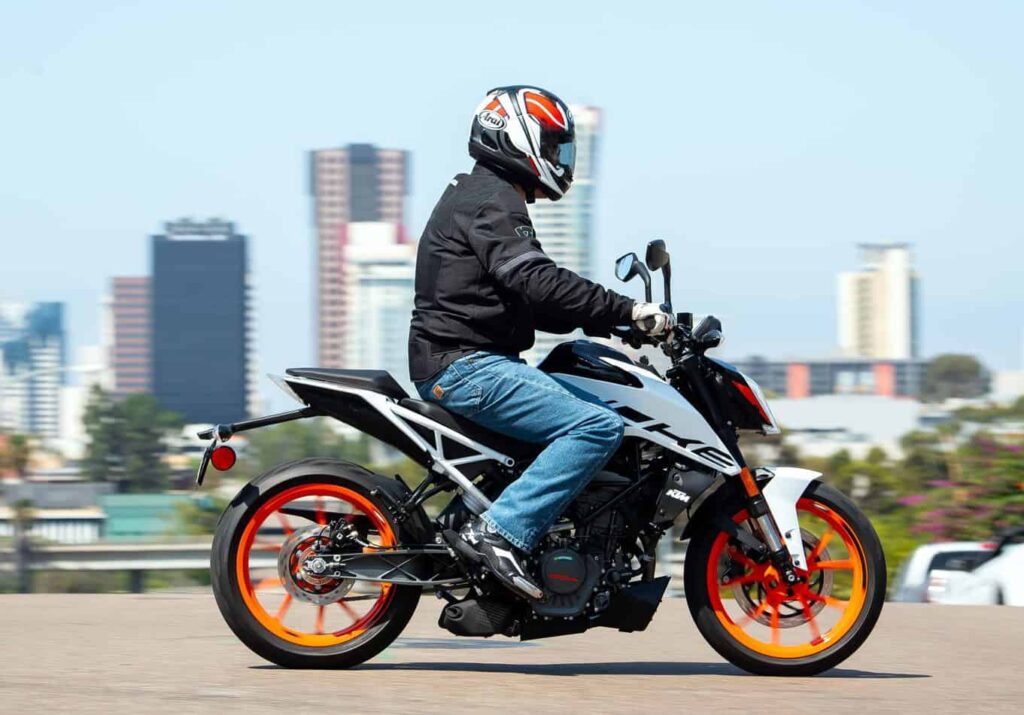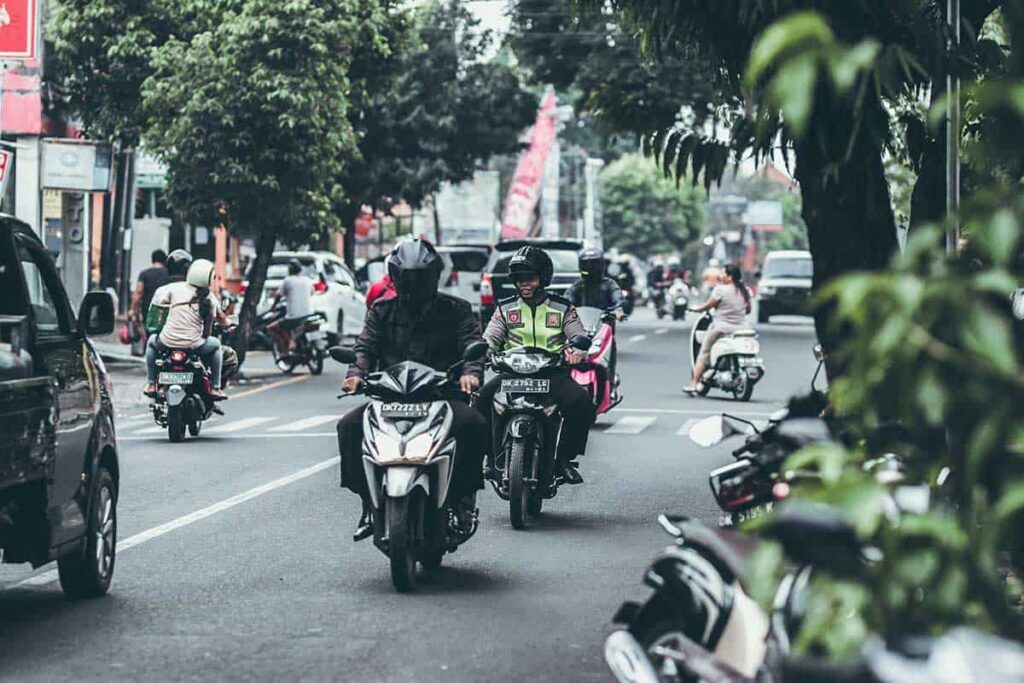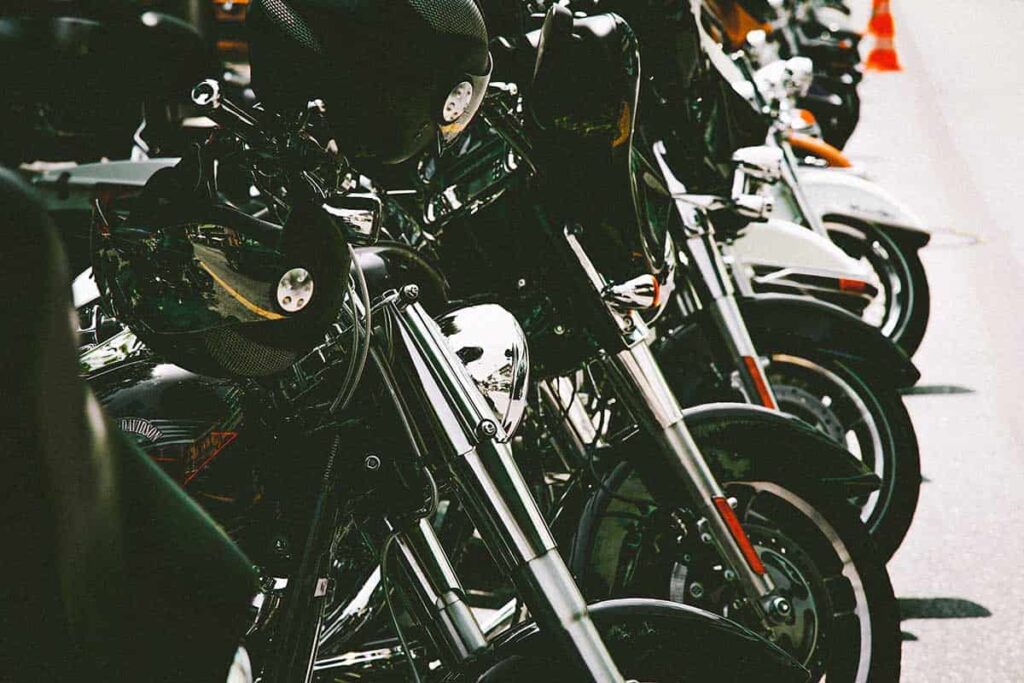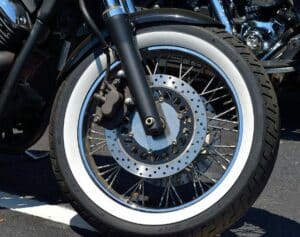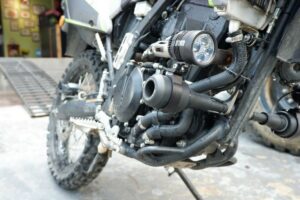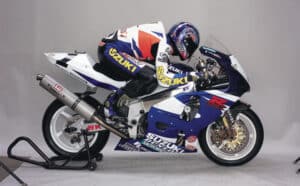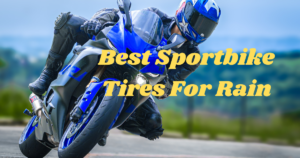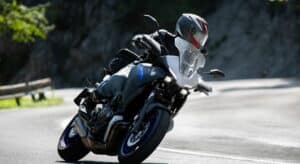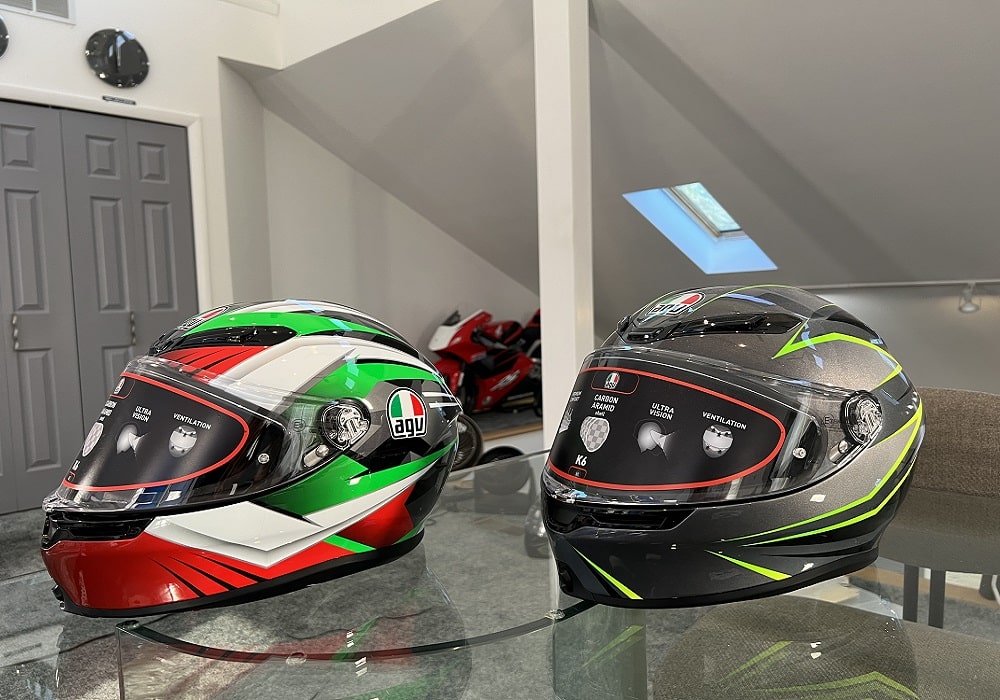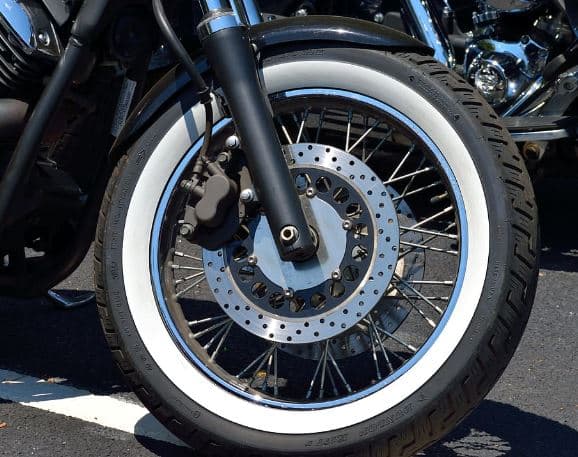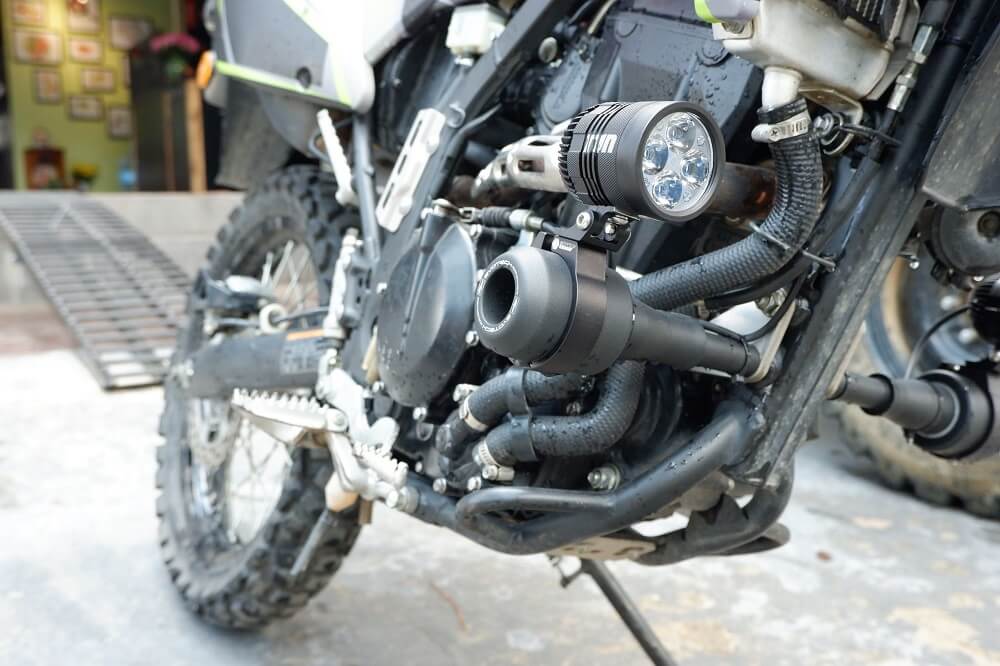When it comes to motorcycle racing, safety should come before anything else. You will often hear rider conversations ending with phrases like “ride safe”, “don’t die,” and all other variations of the departing phrases. Riders are cautioned to ride in a manner that they will live to ride another day.
But how does one ride safely? The instant you throw your leg over your bike, you always know that you are taking a risk. With that in mind, the best way to keep safe on the roads is by learning how to manage the risk every rider exposes him/herself to.
This blog post is the ultimate guide on motorcycle safety tips that you should know. With this knowledge, you will be guaranteed safe riding.
12 Motorcycle Safety Tips Every Rider Should Know
1. Always Wear a Full-Face Motorcycle Helmet
You should always wear a helmet with a face shield for eye protection. Most people tend to skip wearing their helmets when taking short rides. This poses such a great threat to their safety since most motorcycle accidents happen at a slow speed.
A Motorcycle helmet will protect you from sustaining severe head injuries when you hit a patch of gravel or an oil slick. A helmet is crucial for safe riding. If you are wondering whether it’s really necessary to wear a full-face helmet, yes, it is. The chin is the most common area of impact to a bike helmet at 19.4 %.
2. Wearing Protective Gear
There are a number of basic rules with this safety measure. Motorcycle boots that cover all the way to your knees, long jeans or pants, motorcycle gloves, armor abrasion-resistant leather jacket, and definitely a full-face helmet.
For additional safety, consider wearing motorcycle boots and motorcycle pants with motorcycle body armor. You can’t deceive yourself that because you have never fallen before, you won’t park horizontally someday.
Wearing the sometimes-heavy leather motorcycle body armor may be tiring and uncomfortable, especially during summer. However, there are no two ways around it. You must always wear full protective gear if you want to ride safely.
If it is very unbearable, consider getting yourself a vented white helmet, half-finger motorcycle gloves, and white or light-colored gear for summer rides.
3. Pick the Right Bike
Before you begin your ride or race, you need to select a bike that suits you appropriately. Experienced motorcyclists are already conversant with the importance of selecting the right bike.
But that is not always the case when one is selecting a bike for the first time! Most cyclists will tell you that deciding on one’s best bike is as challenging as selecting a tattoo.
One major mistake that you should avoid is choosing a bike based on how it looks. Whenever you are buying or renting one, always take time to test it or a replica of it in the case of buying a new one. The appearance of the motorcycle should be the last thing to consider.
Some of the things you should consider when deciding on the bike you choose include:
- Overall power – This might be a very tricky metric. Having a high displacement does not necessarily mean that the bike is safe. In fact, a 700cc bike can be as fast as a 1400cc because what counts is the weight.
- Wet weight – You are about to test a touring bike, but you have never been beyond Bonnevilles? Well, you better be prepared.
- Power-to-Weight ratio – The bike is faster when this number is higher. Bikes with higher power-to-weight ratios have faster acceleration, shorter braking distance, and higher top speeds. If you are trained to ride on a cruiser, you need to take caution with this.
- Your Judgement – Sometimes, you will want to take a ride, but a thought instantly holds you back. “This bike is too big for me,” “It’s too fast,” and so forth. My take on that is this; sometimes it’s safer listening to your gut.
4. Always Check the Weather to Know Your Limits
A safe motorcyclist always plans a safe ride, making all necessary concessions. You may have planned for a ride, but what happens when the weather changes against you?
You might have to re-plan some aspects of your ride, such as the route to take, the safety gear to wear, canceling hotels if you intended to make long-distance rides, and so forth.
The weather might be so unpredictable at times, and therefore whenever it changes against your plan, you should always make safe decisions.
Related:
Snell vs. DOT Motorcycle Safety Helmet Standard-Which is better?
Motorcycle Airbag Vests-Safety of the riders
The Safety of Full-Face Helmets
5. Always Take Sober Rides
Pilots have a very rational saying: “Eight Hours from Bottle to Throttle.” Well, this applies to motorcyclists as well. Safe riding calls for optimum concentration as you use all your limbs, ears, eyes, and nose.
You must always be aware of what is going on when on the track. Riding under the influence has lots of consequences, including delayed response time, impaired judgment, and high blood-alcohol content, which might increase the risk. Remember, we said the only way to safe riding is to manage your risks.
Just stay away from the bike when under the influence of alcohol and any other substance.
6. Enhance Your Visibility
As a rider, you will often find yourself riding during the night or at low daylight levels. Well, some motorcyclists have a strict code against riding at night or in low light levels.
But when you find yourself in a situation where you have to ride under these conditions, you have to make sure you are well visible to other rod users.
You can enhance your visibility by wearing a light reflector jacket on top of your motorcycle leather suit. When shopping for a motorcycle leather suit, you should consider picking one with retro-reflective patches.
The key to keeping safe when riding at night is enhancing your visibility with high-visibility gear and headlights.
7. Pre-Ride
Most riders never think about this. You are probably with your buddies and want to take a ride for some wind therapy. The last thing that crosses your mind is taking a pre-ride check. But doing a pre-ride check will only take about three minutes of your time.
Check the brakes, the lights, fluids, tire pressure, and so on. Doing this reduces the chances of running into unexpected issues.
8. Get Enough Rest
Rider safety requires high concentration. This means that you are very exhausted after long rides and should therefore take a good night’s sleep. Highway hypnosis is prevalent among drivers and riders alike. You might get really tired during a ride even after getting enough rest and sleep.
You should take breaks, stretch, stay hydrated, or even nap when need be. You can always pull out, park your bike, and take 15 minutes of stretching and resting.
9. On-The-Bike Checklist
Remember what you did when you sat on your brand-new bike in the dealer’s showroom? Well, if you don’t, I will do you a favor and remind you. You checked the bike’s suspension, adjusted the side mirrors, and pictured yourself racing or riding. At times, this will feel as comfortable as being on a recliner, while at other times, it might feel constraining.
Ask yourself questions such as “Does this bike feel right?” “Is my back comfortable?” “Are my shoulders relaxed?” If the answers to these questions are not in the affirmative, always make adjustments.
You should then check the brake and clutch levers to make sure they have the right resistance. Check whether the front brakes are working. The front brakes account for 80 -90% of your bike’s braking power. If they are not working well, get off the bike, and have it repaired.
10. Ride Defensively
As a rider, you are invisible to other road users. You will hear most drivers say that “I didn’t even see him.” Drivers have been trained to see other vehicles, not motorcycles. Due to our rider’s narrow profile, you might find yourself in an auto blind spot.
The best and safest rider safety practice is riding defensively. Act as if no one else is seeing you and always predict the behavior of other road users. Never stop looking, constantly checking your mirrors, doing assessments, and being alert.
11. Keeping Distance and Preventing Distractions
One of the ways you can make sure you are always safe is by staying hyper-alert about everything going on around you. As mentioned in #9, don’t bet on other motorists seeing you. Your mirrors are there for a reason, but you cannot solely rely on these to assess every situation around you.
To be completely aware of all situations surrounding your riding space, you have to engage your head. Experienced riders will tell you that it is important to keep your eyes and head up when around corners and when changing lanes. You can always look over your shoulder to make sure you are in the clear.
Always maintain a safe following distance. This allows you enough space to respond to any obstacle and also ensures that you have sufficient braking distance. New bike models come with anti-lock brakes, but the old models do not. This means that you cannot just slam the brakes.
You should take your time to practice stopping your bike on a safe track. This will help you know the distance you require to break, even in emergency situations. Then always make enough distance for yourself in traffic.
12. Watch Out for Escape Paths
It is critical to have multiple escape paths allowing you to avoid collisions. You often find something or other motorists entering your path of travel, and you immediately have to find somewhere else to go.
The immediate alternative space is known as the escape path. You have to keep looking for escape paths such that if another motorist enters your path, you have an alternative path to maneuver around it.
Most riders have a preference, with some maneuvering to their right while others take their left. However, it is best if you keep your options open and are prepared to take any direction in case anything happens.
Always watch the guard rails as this may endanger your life if you are cornered between the barrier and a vehicle. Avoid all forms of debris and always stay situated within your lane.
Conclusion
Motorcycling is a lifestyle for some while to others, it’s just in their list of hobbies. However, we all begin from the same point, be it learning through self-navigation, private instructions, or guided classes.
There are numerous options to motorcycle gear but having and always wearing one should be at the top of your safety caution practices. Beyond the physical safety gear, you need to be in a sober mental state to stay safe.
Is this a comprehensive list of motorcycle safety tips and everything you need to know and practice as a rider? Definitely not. But it is a great starting point. If you practice everything in this rider’s guide, you are set to increase your riding safety.
Information for this article was partially sourced and researched from the following authoritative Government, educational, corporate, and nonprofit organizations:
Safety Department of the Federal Government of United States!!
About the Author:
Michael Parrotte started his career in the motorcycle industry by importing AGV Helmets into the North American market. He was then appointed the Vice President of AGV Helmets America, total he worked with AGV Helmets for 25 years. In addition, he functioned as a consultant for KBC Helmets, Vemar Helmets, Suomy Helmets, Marushin Helmets, KYT Helmets, and Sparx Helmets.
In 1985, He is the Founder of AGV Sports Group, Inc. cooperation with AGV Helmets in Valenza Italy
Click here for LinkedIn Profile: https://www.linkedin.com/in/parrotte/
Click here for complete AGV Helmet & AGVSPORT History https://agvsport.com/michael-parrotte
Click here for all AGV Sports Group Social Media information http://agvsport.info/


